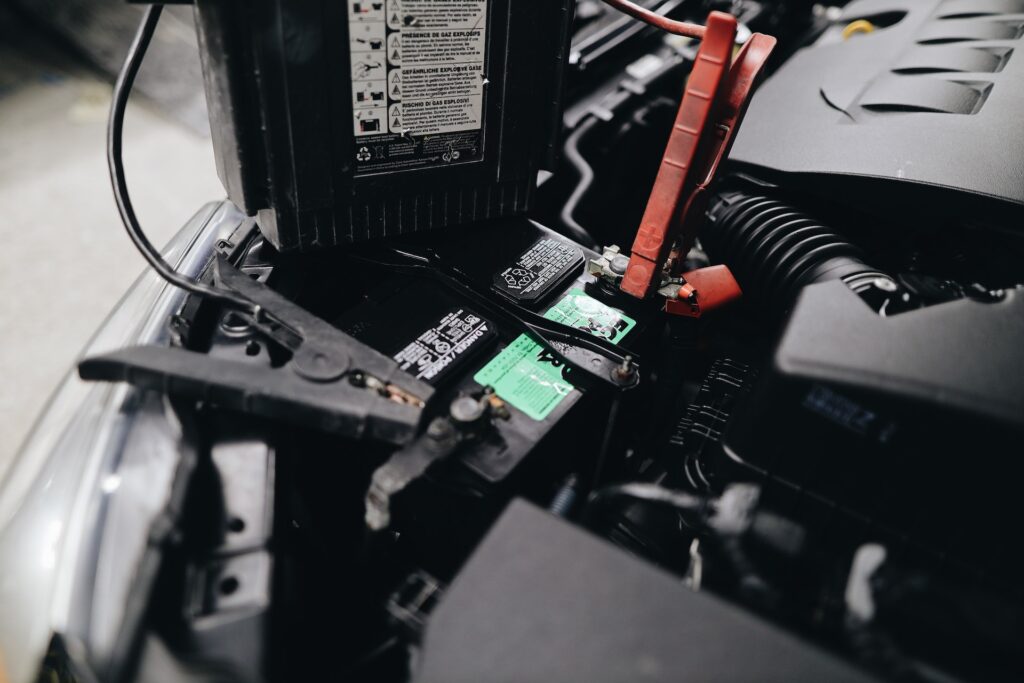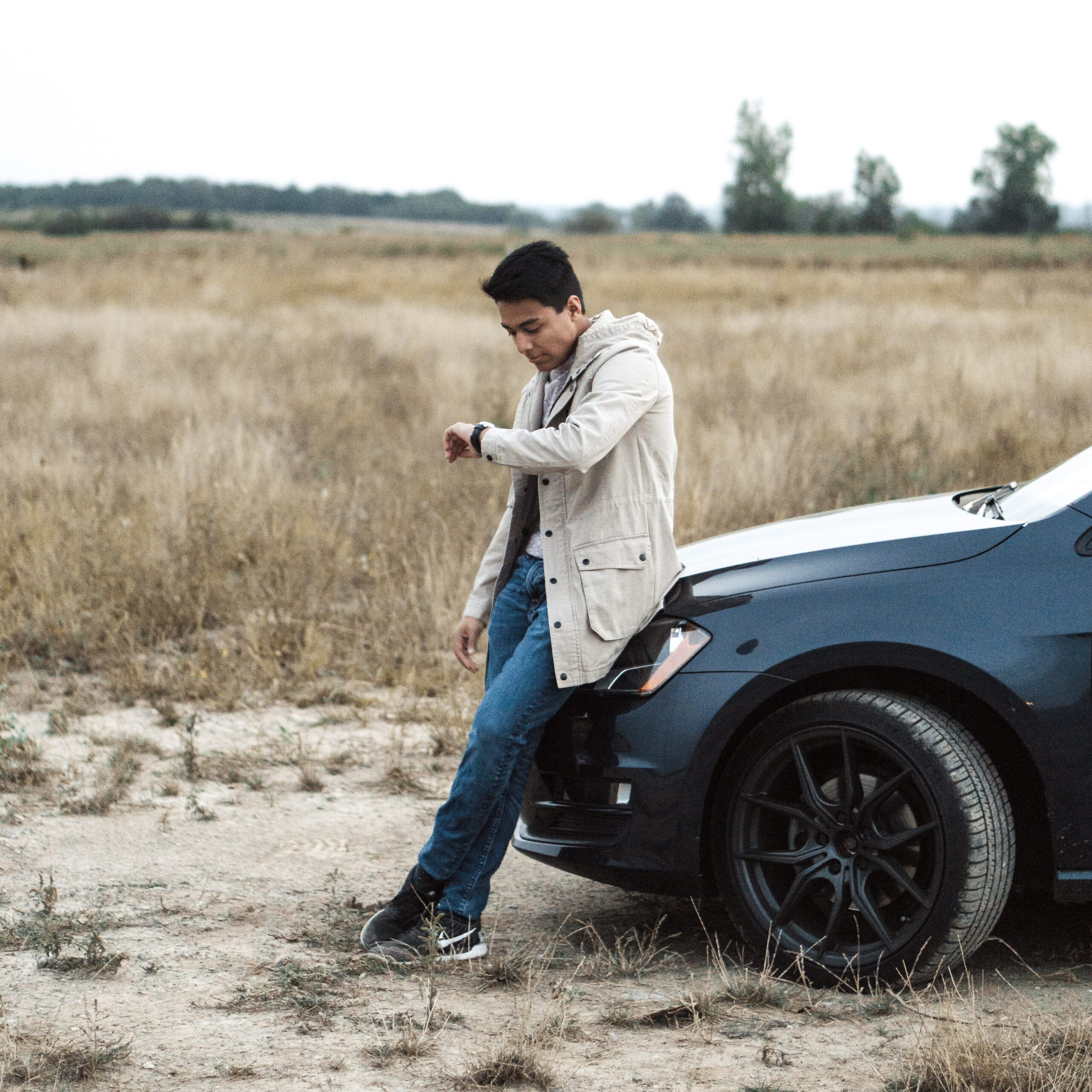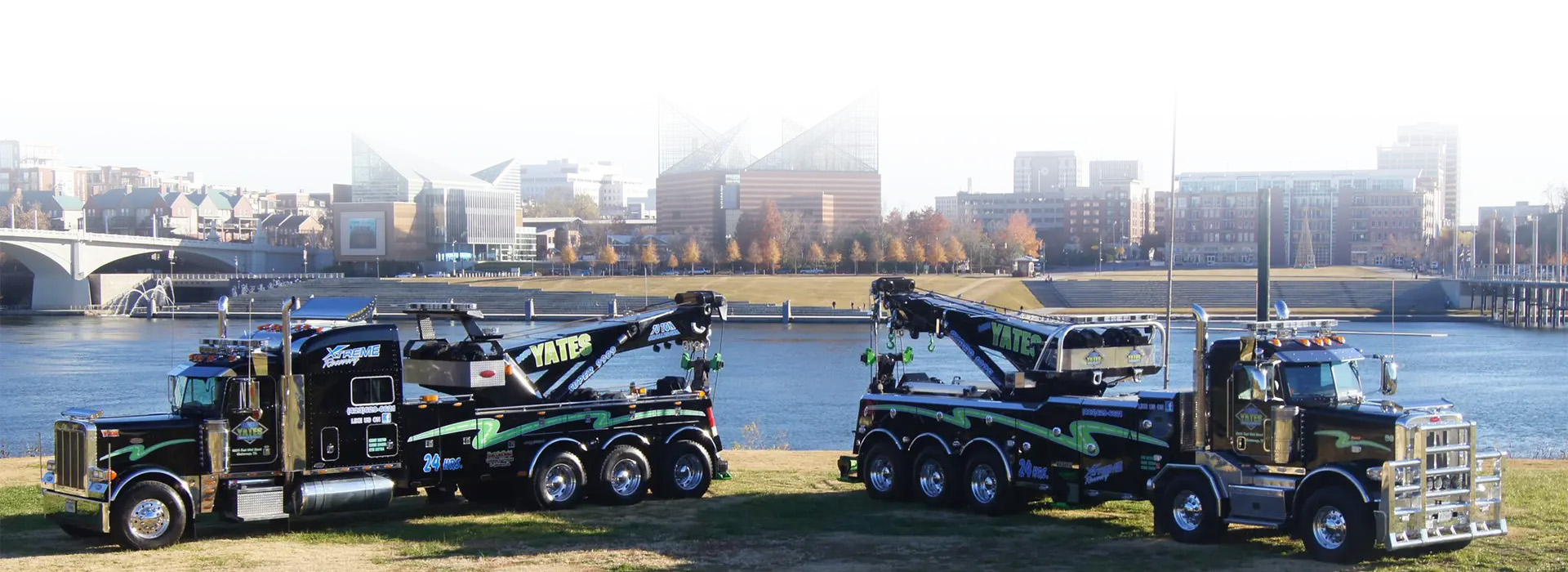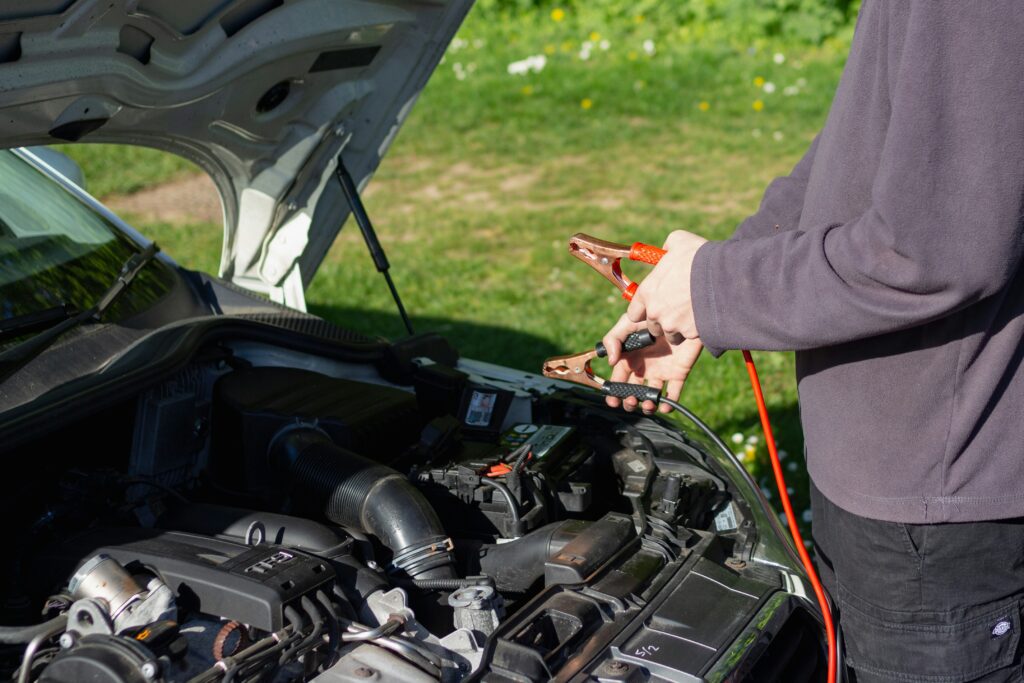It’s early in the morning, and you go to start your car and turn the keys in the ignition, but you get nothing. We’ve all been there, and nothing is more frustrating than a dead car battery. The heat of the summer can be rougher on car batteries than the colder winter temperatures. So what happens next? You can call a roadside assistance service to help you out. However, if you want to learn how to safely jumpstart your car and get out of a situation more quickly, follow these helpful tips from Doug Yates Towing & Recovery below.

What Causes A Dead Battery?
There are many causes for a car battery to stop working, from simple mistakes to things completely out of your control. Hot weather has a big impact on our cars, and battery failure is a prominent issue during the hot summertime months. Heat under the hood of our cars can accelerate the failure and aging of the battery. To avoid the heat, try to park your car in the shade or a garage. Other causes for battery failure include:
- Leaving the Lights or Doors Open
- Charging Issues
- Age of Your Battery
- Extreme Temperatures
- Parasitism
- Corrosion
- Overcharging
- Incorrect Battery Application/Fit
Signs Your Battery Is Dying
Before your car battery dies, it will likely show signs it is on its way out. These signs are important to look for to avoid being stranded in your driveway or stuck on the side of the road.
- Dim Headlights
- Check Engine Light is On
- Bad Smell
- Late/Slow Start
- Corroded Terminals
How To Jumpstart Your Car Battery
Equipment: Having The Right Tools
You can jumpstart your vehicle with a portable jump starter kit, which consists of a stored power source and jumper lead attachments. If you don’t carry one of these with you, you will need another vehicle with a properly maintained battery and jumper cables. Any jumper cables should work, but the bigger and more heavy-duty cables and clamps will allow for a better connection and are more durable. Longer cables will also ensure the batteries can reach each other if getting the two vehicles right next to each other is impossible.
Safety & Preparation
Safety should always be the #1 priority, especially when handling batteries and cables. Make sure you are in a safe location away from traffic.
Next, find a friend or family member willing to assist you and have them park their vehicle directly next to yours or in a place where the jumper cables can reach. Never stand in between the two cars during the connection and charging.
Ensure both vehicles are placed in park, and the ignition is completely turned off. Pop the hood of both cars, consulting the owner’s manual for instructions on your specific car model and the best way to connect the cables.
Never touch the cables or clamps to each other.
Step-By-Step Process
- Begin by attaching the positive cable clamp (red) to the positive terminal of the dead battery. Look for the + symbol and red color.
- Attach the other red jumper clamp to the positive (+) terminal of the working car’s battery.
- Connect the negative cable (black) to the negative terminal of the working car’s battery.
- Then, connect the negative black jumper clamp to the connection point recommended by the owner’s manual. This may be the negative terminal on the battery or an unpainted metal part of the car.
- Once you have the cables connected, turn on the engine of the charged car and let it run for a few minutes.
- After the working vehicle has run for a few minutes, try starting the car with the dead battery. Turn the key until the engine fully starts. If it does not start up, revving the engine of the working car may help.
- Once the car has started, you can begin disconnecting the jumper cables. Leaving both cars running, remove the black, negative cable with the dead battery from the car, followed by the charged car. Set the cables on the ground, ensuring not to touch them to any other part of the car. Remove the red, positive clamp from the dead car, followed by the charged car.

What Next?
- Keep your vehicle running, do not turn the car off. It is essential to recharge the dead battery, and you can do this simply by driving your car. You can continue driving to your destination, but ensure you leave the car running for at least 30 minutes.
- Keep Driving. Every time the car engine runs, the battery recharges.
- If the jumpstart fails or the car battery does not hold the charge, you will need to contact Doug Yates Towing & Recovery to bring your car in for service.
Need A Tow? Call Us Today!
Failed jumpstart? Dead battery? Contact Doug Yates Towing & Recovery today. We are located within the city limits of Chattanooga, Tennessee, one of the area’s most vibrant business communities. Since 1946, it has been the company’s mission to conduct business with integrity and professionalism in all phases of day-to-day services. Whether you need a local emergency towing services or equipment hauling, our family-owned and -operated business is dedicated to providing you with state-of-the-art convenience, innovative technology and reliable services. All of our experienced technicians are professionally trained to ensure complete satisfaction throughout the entire towing or recovery process.
Offering 24/7 towing and recovery services for all motorists and vehicle types, our team of tow truck technicians will help get you and your vehicle to your desired destination quickly, safely and securely. We are a one-stop shop when it comes to all of your towing, hauling and truck repair needs. There is no need to shop around. Simply contact us and we will have a representative available to assist you as quickly as possible. You can count on us for all of your towing and recovery needs.

